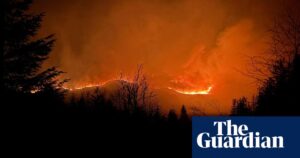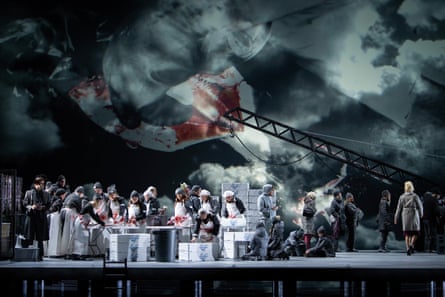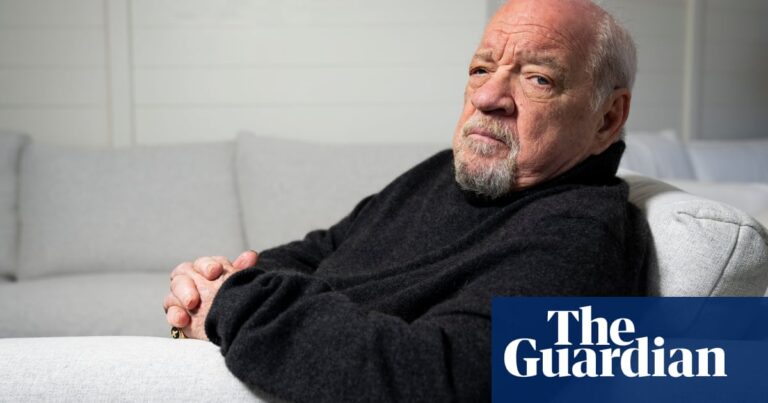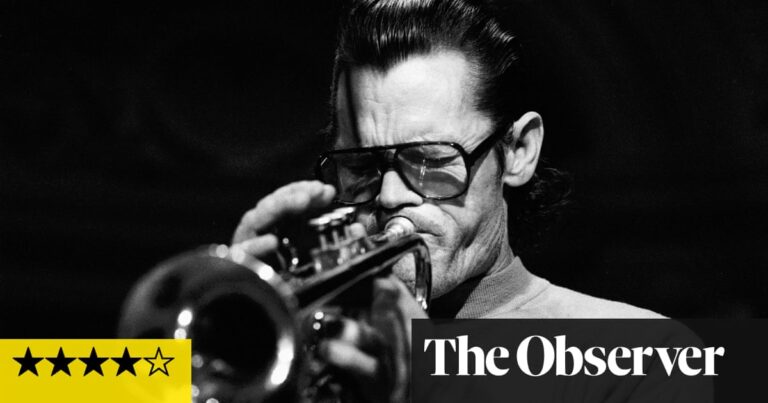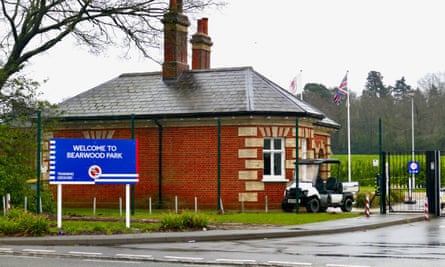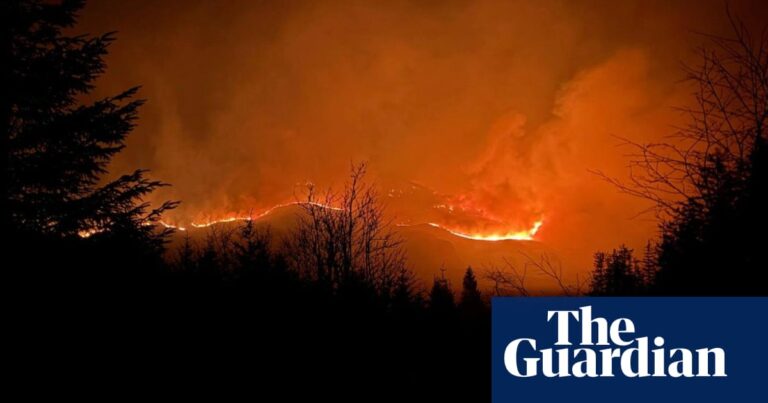Deep Impact
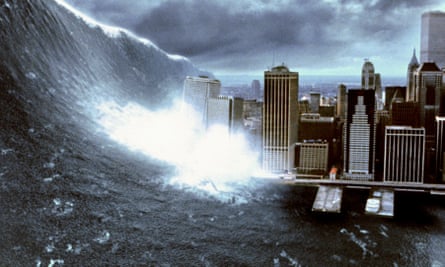
While sadness is never too far from the frame in the disaster genre – the majority of films, after all, do involve the mass erasure of life – it’s rarely felt quite as heavy as it did in 1998’s other comet movie Deep Impact. It unfolds with the frightening urgency of a serious-minded political thriller, as Téa Leoni’s ambitious journalist realises her big scoop is far bigger than she had initially thought, a misunderstood acronym leading her to realise the world might be coming to an end. What always struck, and scared, me as a teenager was just how hopeless things then felt – an aborted mission to throw it off course, a limited and unjust lottery for some to stay safe in shelters, a host of horrible choices to be made – with so much of the film then haunted by the thoughts and fears of people truly facing their own mortality (James Horner’s crushing score is an added killer). It’s most painfully felt in Leoni’s fractured family, her parents played by the Julia co-stars Vanessa Redgrave and Maximilian Schell with far more punch and complexity than one expects in this territory. While the world might not ultimately end, it’s hit by devastation of an unfathomable scale, a reminder of how powerless and unprepared the world would be if such a day were to ever come. It still gives me a chill. Benjamin Lee
The Day the Earth Caught Fire
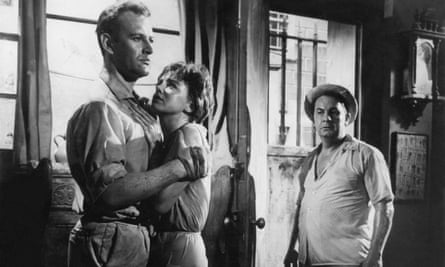
There’s something about the phrase “black-market water” that will always be deeply unsettling. In Val Guest’s grimly realistic disaster movie from 1961, The Day the Earth Caught Fire, we watch the apocalypse creeping into view from the perspective of a Fleet Street newsroom. The alcoholic reporter Peter (Edward Judd) and his gruffly supportive editor Bill (Leo McKern) gradually realise that two simultaneous nuclear bomb tests, by the US and the Soviet Union, have thrown the Earth off its axis, leading to a lethally escalated global warming. The Express’s then recent editor Arthur Christiansen plays himself, to add extra authenticity to this portrait of a world spinning towards destruction. First the water rationing, then the spread of disease, and finally, with the world on the verge of catastrophe, orgiastic social disorder. It is the 1960s after all. With the help of his source, a temp typist at the Met Office (Janet Munro), Peter pieces together the story, but our last sight of him is labouring at an isolated typewriter in the sweltering heat, producing some ripe prose to accompany one of two front-page splashes, ready to go to press – “World saved” or “World doomed”. Pamela Hutchinson
Titanic
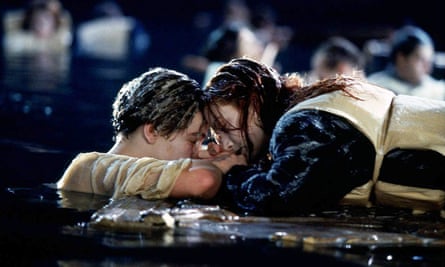
While any disaster movie connoisseur would have to doff their cap to the works of Roland Emmerich (signature move: cars somersaulting in the street) and the 70s pioneers of Poseidon/Earthquake/Airport legend, in the end I think you have to hand it to James Cameron for a supremely supercharged treatment of the concept. If you look past all the floating-door guff, Irish dancing and Billy Zane waving a pistol about, what is pretty remarkable about Titanic – especially so for a $200m blockbuster – is how plausible it made things seem. Most directors with access to a large FX budget go massively overboard, to coin a phrase, and turn their film into a cartoon (not that there’s anything wrong with that), but Cameron – amazingly, kept Titanic on a low throttle for what seems like an age, rather brilliantly pointing up the fact that the actual ship took over two hours to sink. Although of course we get the FX fireworks towards the end, Titanic is really an incremental disaster movie, one that tells us about the actuality of real events that say Emmerich, for all his films’ virtues, would never have taken the time over. Andrew Pulver
Twister
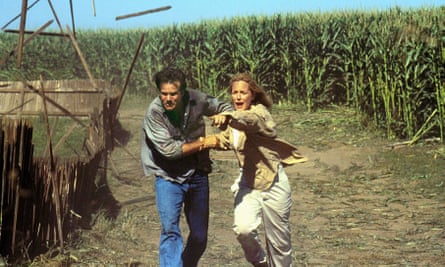
You can feel the twin forces that are Steven Spielberg and Jan De Bont swirling around in Twister, the earnestly exciting blockbuster about storm chasers throwing themselves in front of tornadoes. Spielberg was meant to direct the picture before he handed it off to Speed director De Bont, who was retreating from a failed attempt at making a Godzilla movie. With Twister, De Bont essentially made his Godzilla movie, replacing the atomic kaiju with destructive winds that top the Fujita scale, while mixing in that Spielberg-ian sense of wonder with the simple and unrelenting adrenaline rush he gave his bomb-on-a-bus thriller. Twister – with its flying cows, welcome reliance on practical effects and a delightful supporting turn from the late, great Philip Seymour Hoffman, who was as scenery chewing as the cutting edge CGI-tornadoes – kickstarted a late-90s disaster movie renaissance, the movie also tipping its hat to that genre’s appeal. Remember the moment when Helen Hunt appears hypnotized by the tornado that sneaks up on a drive-in, struck by the awe-inspiring beauty of that thing she fears as it tears through a movie screen. She is us and that moment is what all disaster movies should aspire to. Radheyan Simonpillai
Melancholia
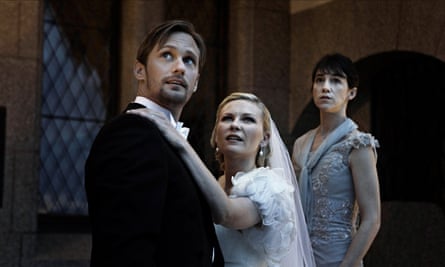
What makes Lars von Trier’s literally Earth-shattering apocalypse movie so different is that it completely ignores the tropes of so many other such movies – the miles-long traffic jams, the throngs of screaming rioters, the death-defying escapes. Instead, it plays out on the intimate scale of one of the Dane’s classically screwed-up families, with sisters Justine and Claire working through their entwined forms of dysfunction while the rogue planet Melancholia makes its inevitable way toward the Earth. It starts with Justine’s disaster of a wedding, which she herself smashes to bits when her depression gets the better of her. Fast forward to weeks later, when Justine’s depression has flared up into disturbing proportions, and Claire is falling to bits amid fears that Melancholia’s flyby will end in disaster. Von Trier’s gift for the intimacy of dysfunction – and standout performances by Kirsten Dunst and Charlotte Gainsbourg – hugely accentuate the eerieness and emotional poignancy of the apocalypse. This is arguably far more evocative of what disaster is really about than millions of dollars spent on CGI explosions: its overwhelmingness, the way it forces one to work through emotions like denial, grief and acceptance, and its ultimate implacability. Add in absolutely brilliant use of Wagner’s Prelude, as well as indelible images like Justine finding respite from her depression by spending nights bathing in the rogue planet’s light, and you get a film that is devastating as few can be. Veronica Esposito
The Poseidon Adventure
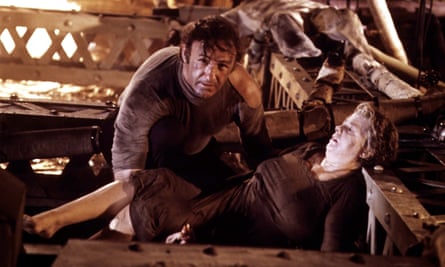
Early TV exposure to the mothership of disaster movies meant a lot of shuffling feet at the ferry port at Ramsgate, but also a generation too traumatised to clock just what a copper-bottomed masterpiece this is. No fewer than five Oscar-winners are among the passengers on the doomed HMS Poseidon: Gene Hackman’s maverick priest, Shelley Winters and Jack Albertson’s Jewish grandparents, Ernest Borgnine as a mouthy cop and Red Buttons as a lovelorn haberdasher. It’s this immaculate character detail that elevates Ronald Neame’s massive smash most: every time a cast member is picked off (or, more usually, sacrifices themselves) in one or other of the breathtakingly brutal set pieces, the time and space already devoted to them anchors and amplifies the impact. The pace is perfect, the sound design extraordinary, and beefy, balding, God-baiting Hackman is a total marvel. Fifty-two years on this is still absolutely shipshape. Yes, there’s entirely too much sweat, the polonecks are a pity and why even charred corpses have the bright blue eyes shared by almost all key cast I can’t explain. But what a trip. Catherine Shoard
Don’t Look Up
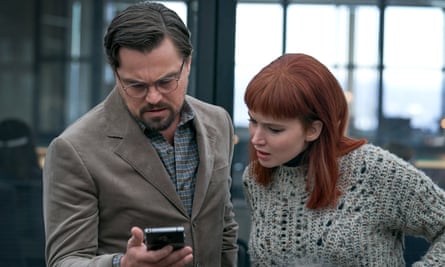
“This is a Christmas movie?!” my father spouted minutes into our two-man streaming of Don’t Look Up. And what a gift it was. Here’s a film that doesn’t romanticize the end times, that keeps it real about how events would actually react in our panicky, polarized, post-truth era: The government would let us down, the rich guy would cash in, the media would get the story wrong – and all while the scientists who saw the meteor coming with time to spare are driven loony by this deeply unserious civilization. (Spoiler: Tyler Perry and Cate Blanchett’s ditsy presenter characters don’t make it, a shame given their world-starting chemistry.) Don’t Look Up’s true ring springs from the Leo DiCaprio and Jennifer Lawrence-led cast, killer music scored by Succession’s Nicholas Britell and cracking writing and direction from Adam McKay – whose tendency to overstate the obvious is tonally appropriate here. Just as the Simpsons gets credit for seeing the future, don’t be surprised if it’s the forecast in Don’t Look Up that stands the test of time. Well, at least until time runs out. Andrew Lawrence
The Perfect Storm
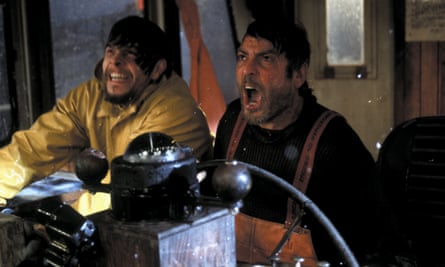
The Perfect Storm, Wolfgang Petersen’s 2000 adaptation of Sebastian Junger’s nonfiction book, terrifyingly combines my two nightmare disaster fascinations: being stuck on a sinking ship in the freezing North Atlantic (I am and always will be a Titanic fangirl) and big waves (I am haunted by footage of the 2004 tsunami on YouTube). More specifically, if maybe not historically accurately, in this depiction of the Perfect Storm of 1991: a massive 100-ish foot rogue wave during the nor’easter to end all nor’easters. There are non-disaster reasons to enjoy this tale of an ill-fated shipping vessel from Gloucester, Massachusetts: George Clooney doing his best New England everyman, Mark Wahlberg giving a different flavor of Massachusetts working class, Mary Elizabeth Mastrantonio as the flinty female captain of another fishing boat. But this film is primarily enjoyed as a horribly tragic, unimaginably cold, mostly true chapter in the age-old tale of man v sea. One that may also lead you to bone-chilling videos of actual monster open-sea waves, and which (spoilers), as in real life, left no survivors. Adrian Horton
Avalanche
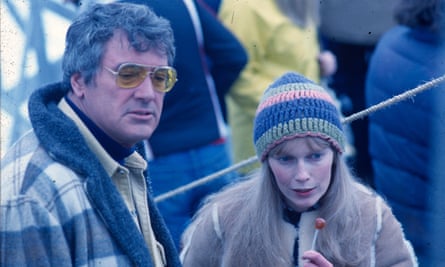
Chances are you can suss out what happens in this one from the title. Checking in amid the death rattle of the 70s disaster pic cycle, this Roger Corman special leaves no hammy box unticked. The shady millionaire land developer Rock Hudson persuades his magazine reporter ex-wife Mia Farrow (he can’t remember if it’s for Harper’s Bazaar or Vogue) to attend the grand opening of his fancy new ski resort, where she winds up falling for the doomsayer environmental photographer Robert Forster. Subplots involving an arrogant downhill skiing champion, a suicidal jilted ex-girlfriend and a figure skating rivalry (among others) are rendered pointless when nearly every character is killed off by oddly formed chunks of Styrofoam and plastic snow. But not before surprise bursts of nudity and drawn-out party scenes with a comical excess of cable-knit sweaters and baked alaska. Hudson and Farrow make for one of the most breathtakingly mismatched screen couples imaginable, but Forster and Jeanette Nolan do good jobs with the material. So kitschy and cliched it may as well be called Airplane in the Rockies, it’s an almost platonic distillation of the genre (and in my head canon exists in the same universe as Force Majeure). Bryan Armen Graham
Source: theguardian.com




